Take The Stress Of Virtual Design Thinking Out Of Your Next Digital Pivot
Do you need to create a virtual workshop? Are you worried about how the audience experience will be? What about virtual design thinking? Do you need to get it done? Like now? If you answered yes to one or more of these questions, help is at hand.
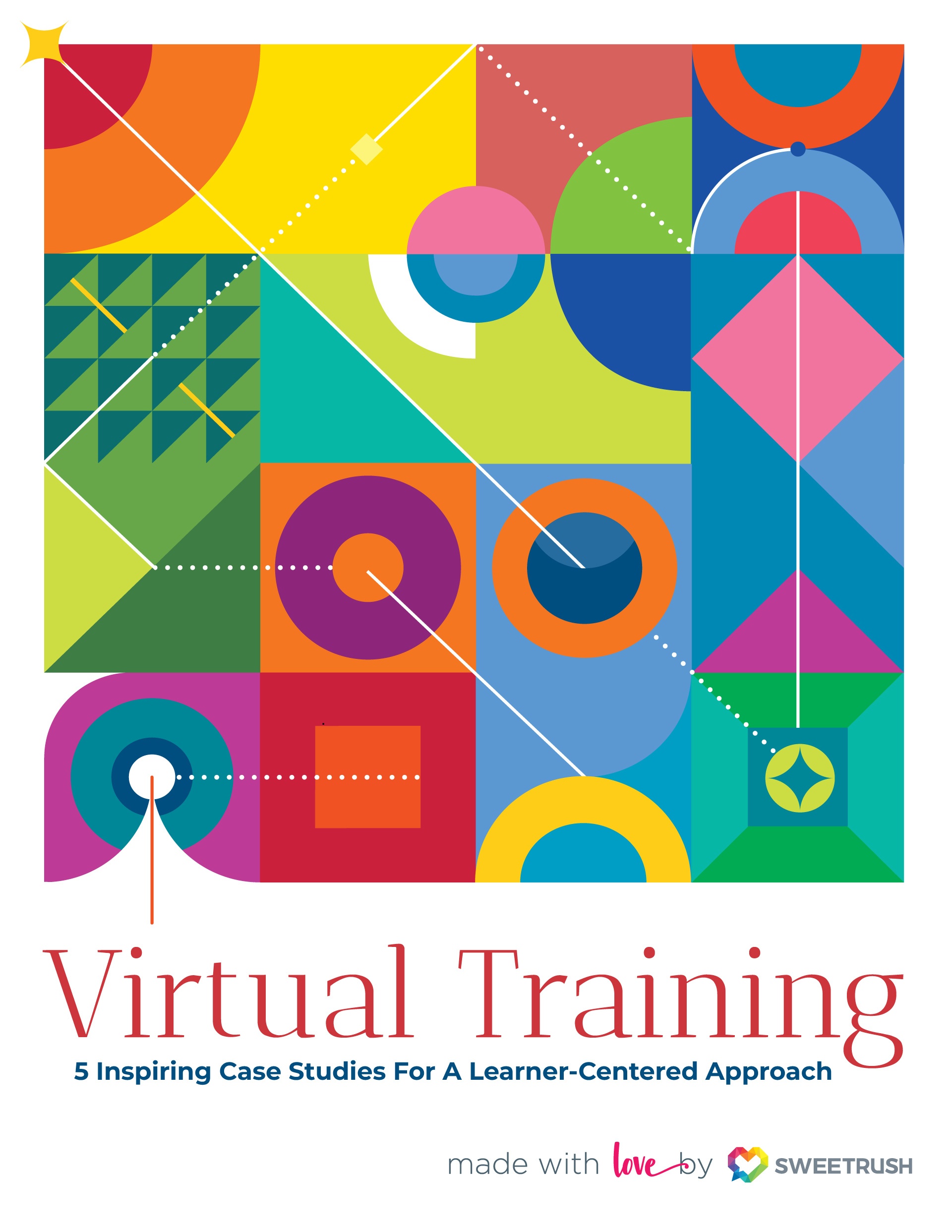
My company—a solution provider with a fully remote workforce—is no stranger to crafting virtual workshops and training solutions for clients. Earlier this year, however, the tables were turned. We had to put our experience to the test and rapidly convert our design thinking workshop—which we call CoDesign™—into a virtual experience.
We suddenly found ourselves in the shoes of our clients, asking the same questions we hear them ask:
- Will the quality of the experience be compromised if we make it virtual?
- Will people show up and be as engaged in the process as we are used to seeing?
- How will we get it all done in time?
Never ones to shy away from a challenge, we assembled a team and leveraged our collective expertise and best practices [1]. If we dare say so, our new virtual design thinking workshop has matched, if not surpassed, our in-person experience. And we learned some things along the way!
If this sounds like a challenge you are getting ready to face, read on as we share our lessons learned and help you take your virtual workshop design to the next level.
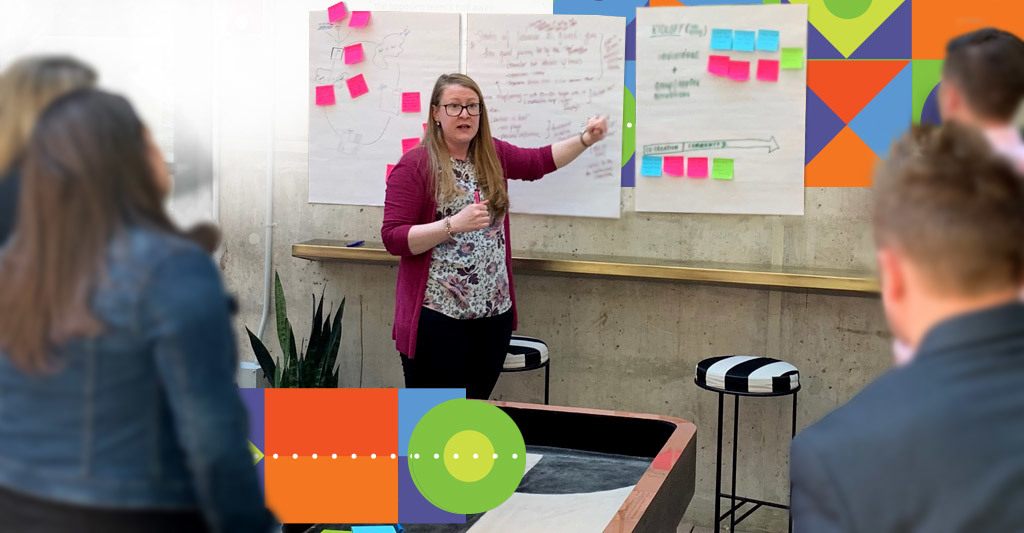
What Did The Pre-COVID-19 CoDesign Workshop Look Like?
The CoDesign workshop brings L&D professionals, stakeholders, SMEs, and—most importantly—learners together through a creative and engaging experience as they work through the 5 stages of design thinking: empathize, define, ideate, prototype, and test.
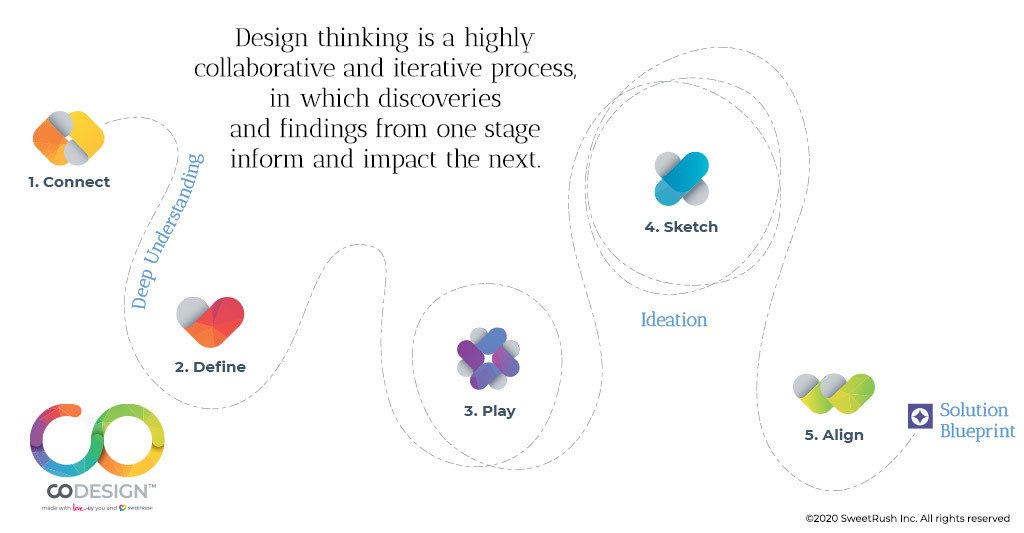
Virtual design thinking is a highly collaborative and iterative process, in which discoveries and findings from one stage inform and impact the next. Pre-pandemic, the live workshop typically ran for two to three consecutive days to facilitate the momentum required to work through each stage.
While the schedule was intense—facilitators often worked during breaks and between sessions to document and pull findings through to the next session—there was no doubt that working through all 5 stages in succession as a cohort was the way to go. Our client and internal teams both raved about the efficiencies gained as well as the quality of the outcomes. We were onto a winning formula.
And then, along came COVID-19.
And...Pivot!
As a virtual company, it had always been in our longer-term game plan to transform the CoDesign workshop into a virtual experience.
We had already started to identify and pilot activities that would translate well into a virtual environment. But there was a high demand for the in-person experience, and we were receiving great feedback on it. The full virtual conversion was planned for later in the year.
The pandemic shifted those priorities and accelerated the game plan. We had two CoDesign experiences sold and no way to travel. We needed to take action—and fast.
And...Push!
We know how impactful virtual training experiences can be—we quite literally wrote the book on it—but we still had reservations about how successful this transformation would be. Could we create the same immersive, collaborative, and engaging experience as a virtual workshop, in record speed?
It turns out we could. And we did. And the experience got even better.
The team wasted no time.
- They began by weighing options for breaking the schedule down into smaller sessions.
- Next, they identified and converted activities that would quickly and easily transition to a virtual classroom.
- Then, they tried out new tools and resources for the more complex activities.
- Finally, they examined the team itself and what support it would need with the virtual facilitation.
It was a rigorous pivot, and, after an intensive few weeks of ideation and prototyping, it was time to test. The team ran internal sessions with volunteers to pilot new tools and activities before running their first fully virtual experience with a client.
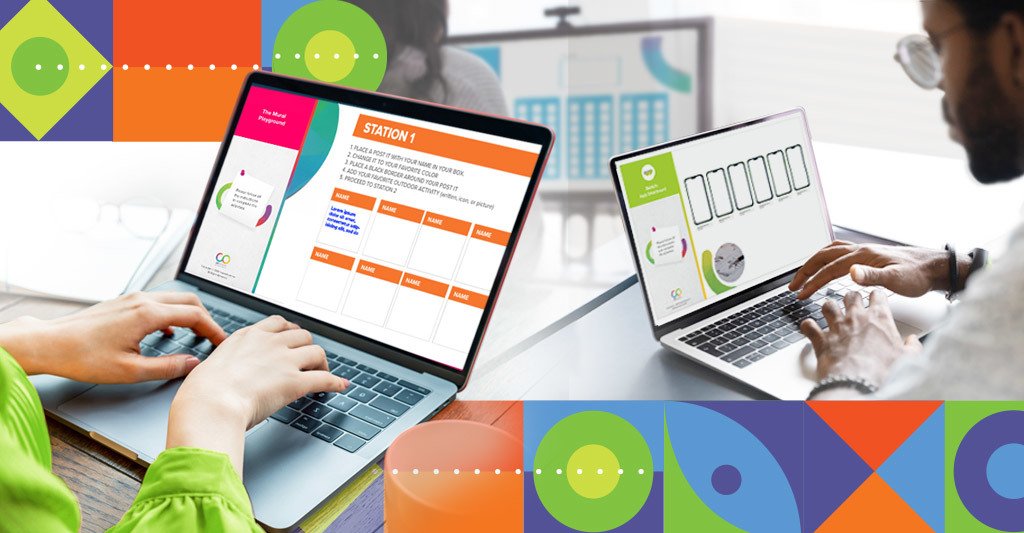
And...Success!
We’re delighted to share that our virtual CoDesign experience has been a resounding success! Our team all agreed: the new virtual design thinking workshop was an equally if not more immersive, collaborative, and engaging experience than our in-person version.
Let’s find out why, through 5 lessons learned that you can use to level up your own virtual workshops.
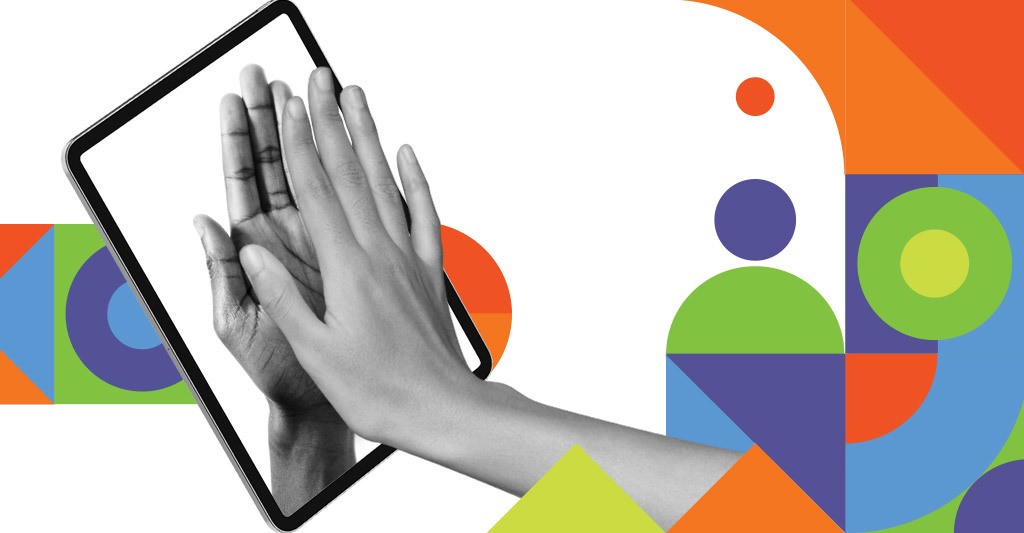
5 Lessons Learned In Designing A Virtual Workshop With Virtual Thinking Design

1. Breaking Up Or Extending The Virtual Workshop Might Improve The Experience
We knew that we couldn’t keep the workshop in its current two-to-three-consecutive-day format; we needed to break it down into smaller sessions. But we worried that, by shifting the cadence, we would impact the momentum and energy we’d seen in our in-person workshops. We needn’t have worried.
The shift to virtual gave the team the freedom to explore alternative scheduling plans. Could more breathing room in the process add value? Turns out, the answer was yes.
In the virtual design thinking workshop, teams now take about a week to a week and a half to arrive at the Sketch step. The design team then works internally for about three days to create a prototype before reconvening for the Align step. The result: our client ends up with a more functional prototype that then speeds up production.

2. You Don't Have To Take Your Virtual Workshop Redesign On All At Once
Prioritize what you need to prioritize then come back to the rest later. A true "training" experience transformation often involves looking for ways to either eliminate content and activities or move them offline as part of a blended approach. This time, we knew we had to complete all 5 steps of the virtual design thinking workshop. Nothing could be skipped.
To make matters more complicated, we tailor our CoDesign experience to each audience’s need—which means the leader’s guide includes no fewer than 35 possible activities with detailed facilitation notes and participant instructions. We needed to prioritize.


3. Bring In Back-Up, And Make Sure They Have What They Need To Be Successful
Our facilitators are highly skilled at running live design thinking workshops, but the complex and nuanced virtual environment was new for them.
The virtual setting required new collaboration tools—we're now Mural superfans! Virtual CoDesign also needed an additional role: a Producer. The Producer ensures all of the tools and technology are prepped and ready for the sessions—and helps participants through any issues. Together, the Facilitator and Producer balance keeping the audience engaged with moving the program forward and making connections from one virtual workshop session to the next.
The team also rewrote the leader’s guide for the virtual design thinking experience to accommodate both the Facilitator and Producer roles. It now features a “run sheet” of the program and a breakdown of steps for each role.

4. If You Build It And Set Some Expectations, They Will Come
CoDesign requires consistent, focused, and active participation from all participants at all times. Decisions made in one step of the process go on to inform everything that follows. Would people be able to commit to attending each and every session, and would they stay engaged if there were gaps in between?
The team quickly found that setting the right expectations was significant—participants needed to commit the time and be “plugged in.” When that happened, so did the magic; the team found that participants were more engaged in many cases.
One reason for this is that the Mural boards give participants access to everything at all times—someone who might be hesitant to get up and look at a wall of post-it notes at an on-site can find all of the information at their fingertips.

5. Never Stop Improving: Take Time To Reflect, Iterate, And Evolve Your Virtual Workshop
Just like the iterative process they’re facilitating, the team continually improves CoDesign with lessons learned from every session.
One important evolution: modular experiences that can be leveraged during any learning program solution design, if the full CoDesign experience isn’t possible.
There’s no denying that design thinking offers incredible benefits for learning solution design. We have seen better and more learner-centric solutions, greater stakeholder and team buy-in, and stronger team engagement as a result of our CoDesign experience.
Our virtual CoDesign brings added benefits—greater engagement in the activities, more breathing room in the process, and a more functional prototype—which helps set up the next stages of the project for success.
And as the word gets out about virtual design thinking and how it can be used to create effective, learner-centric solutions, demand is increasing. The SweetRush team has collaborated on almost the same number of virtual CoDesign experiences as on-sites, in less than a third of the time frame.
Virtual Design Thinking At Its Finest
Whether you are already committed to the idea or are just starting to explore design thinking and virtual workshop design, download Virtual Training—SweetRush Style: 5 Inspiring Case Studies For A Learner-Centered Approach. In this essential guide, you’ll learn how 5 organizations met their learners’ needs in 5 unique ways. Let their challenges, audiences, and solutions spark your creativity as you take your next step. Also, join the webinar and get to discover how to inject more creativity in your virtual learning programs.
References:
[1] Best Practices for Quickly Converting In-Person Training to Effective Virtual Learning


